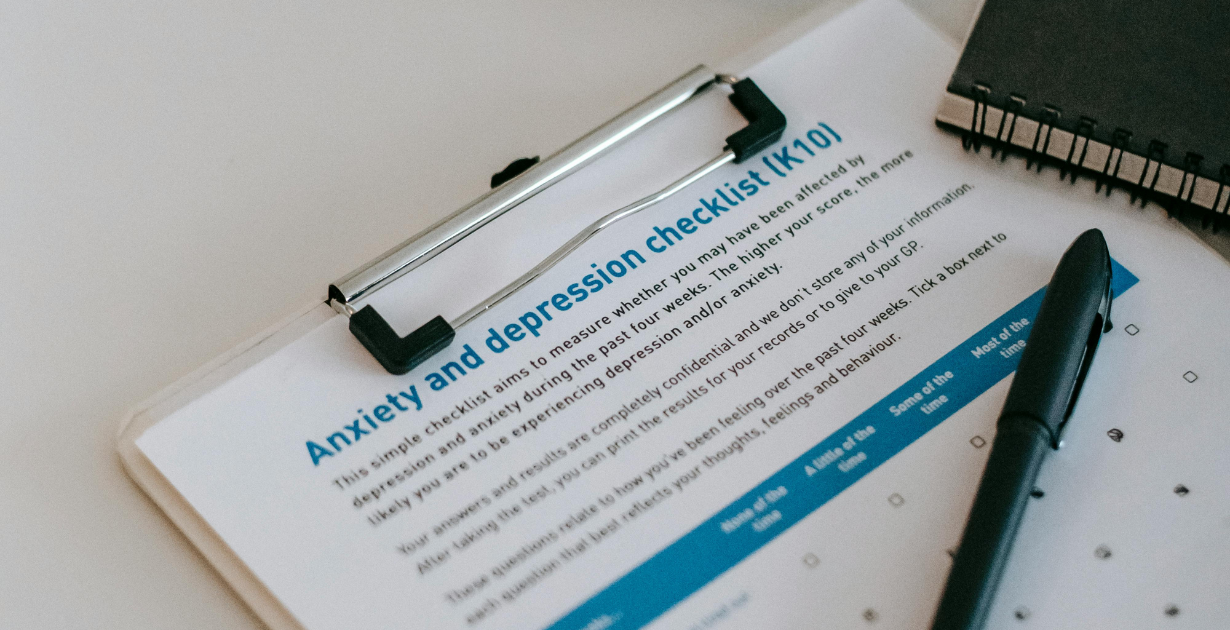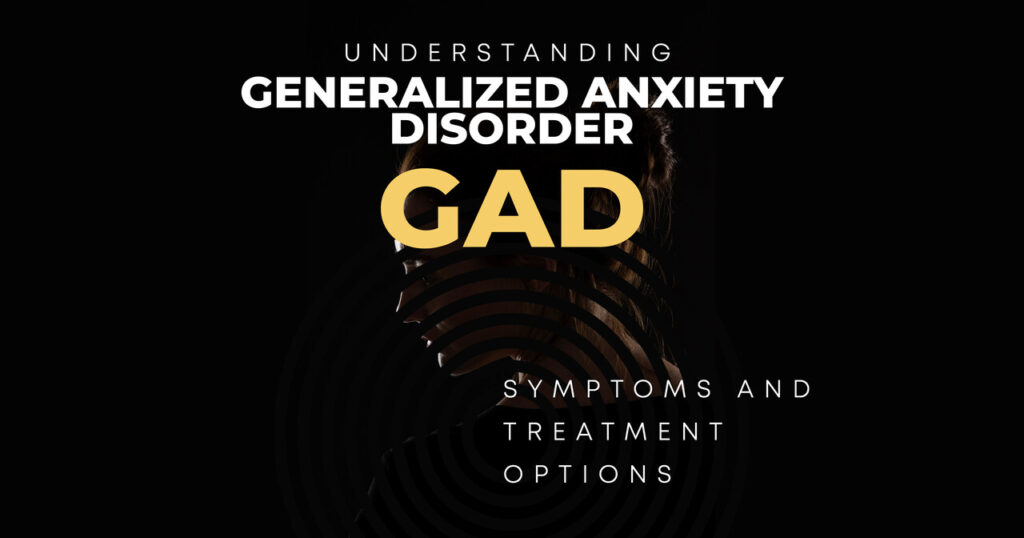Essential Takeaways
- Understanding Symptoms is Key: Recognizing the symptoms of anxiety disorders, such as persistent worry and physical symptoms, is crucial for seeking appropriate help and managing the condition effectively.
- Treatment Options are Diverse: Effective management of GAD involves a combination of medication, therapy, and lifestyle changes. A tailored approach can address both excessive anxiety and underlying issues.
- Seeking Support is Vital: Building a support system and seeking professional help are essential in managing GAD. Don’t hesitate to contact mental health professionals for guidance and support.
In this guide, we’ll break down everything you need about GAD—its symptoms, causes, risk factors, diagnosis, and treatment options. By the end, you’ll understand how to manage and support yourself or a loved one through this condition.
Introduction to Generalized Anxiety Disorder (GAD)
Shine Mental Health
What is Generalized Anxiety Disorder?
Generalized Anxiety Disorder, often abbreviated as GAD, is a mental health disorder characterized by excessive, uncontrollable worry about various aspects of life. Unlike occasional anxiety, which everyone experiences from time to time, GAD is persistent and can interfere with daily life. People with anxiety disorders worry about everyday matters like work, health, and social interactions to an extent disproportionate to the actual risk or impact.

GAD is more than just a series of anxious thoughts. It involves physical symptoms such as restlessness, muscle tension, and fatigue. According to the National Institute of Mental Health (NIMH), GAD affects approximately 3.1% of the U.S. population each year, making it one of the most common types of anxiety disorders.
Why Understanding GAD is Important
Understanding GAD is crucial for several reasons. First, it helps recognize the condition early, leading to more effective treatment. When you know what to look for, seeking help and managing symptoms of anxiety disorders before they become overwhelming is easier. Additionally, awareness about GAD can help reduce stigma and foster a supportive environment for those affected.
Symptoms of Generalized Anxiety Disorder
Common Symptoms
GAD is characterized by a range of symptoms that can affect both the mind and body. Here are some of the most common symptoms:
- Persistent Worry: Individuals with GAD often experience chronic, excessive worry about a variety of issues. This worry is difficult to control and disproportionate to the actual situation. This excessive worry can also manifest as separation anxiety disorder in children or selective mutism.
- Restlessness: People with GAD frequently feel on edge, restless, or keyed up. This constant agitation can make it hard to relax or enjoy leisure activities.
- Muscle Tension: Chronic anxiety can lead to muscle tension, which might cause physical discomfort, such as headaches or back pain.
- Fatigue: Constant anxiety can be draining, leading to feelings of exhaustion and fatigue even if you’re getting enough sleep.
- Difficulty Concentrating: The incessant worry associated with GAD can make it hard to focus on tasks or concentrate, affecting work and daily activities.
- Sleep Disturbances: Individuals with GAD might experience trouble falling asleep, staying asleep, or having a restful sleep due to their anxious thoughts.
How Symptoms Affect Daily Life
The symptoms of GAD can severely impact daily activities. Persistent worry and physical symptoms can interfere with work performance, relationships, and overall quality of life. For instance, difficulty concentrating can lead to mistakes at work, while sleep disturbances can affect your mood and energy levels. In some cases, individuals may also experience panic disorder or social anxiety disorder, further complicating their mental health conditions.
Differentiating GAD from Other Anxiety Disorders
It’s crucial to differentiate GAD from other anxiety disorders, such as panic disorder and social anxiety disorder:
- Panic Disorder: This is characterized by sudden and intense episodes of fear known as panic attacks, which are often accompanied by physical symptoms like heart palpitations and shortness of breath.
- Social Anxiety Disorder: Individuals with social anxiety disorder experience intense fear of social situations and worry about being judged or embarrassed.
While GAD involves general and persistent worry across various aspects of life, these other disorders have more specific triggers and symptoms.
Causes and Risk Factors
What Causes Generalized Anxiety Disorder?
The exact cause of GAD isn’t fully understood, but several factors may contribute to its development:
- Genetic Factors: Evidence suggests that GAD may run in families, indicating a genetic predisposition to the disorder.
- Brain Chemistry: Imbalances in neurotransmitters, the chemicals in the brain that regulate mood and anxiety, can play a role in GAD.
- Environmental Factors: Stressful life events, such as trauma or chronic stress, can trigger or exacerbate GAD. For example, major life changes like moving to a new city or experiencing a job loss can be stressors.
- Personality Traits: Certain personality traits, such as a tendency towards perfectionism or a high level of sensitivity, can increase the risk of developing GAD.

Shine Mental Health
Risk Factors for GAD
Several risk factors can increase the likelihood of developing GAD:
- Family History: A family history of anxiety disorders or other mental health conditions can elevate risk.
- Chronic Stress: Long-term stress from various sources, such as work or personal issues, can contribute to the development of GAD.
- Trauma or Abuse: Past trauma or abuse can be a significant risk factor for GAD.
- Personality Traits: Traits such as a tendency to worry excessively or high levels of neuroticism can make one more susceptible to GAD.
Diagnosing Generalized Anxiety Disorder
How is GAD Diagnosed?
Diagnosing GAD involves several steps:
- Medical Evaluation: A healthcare provider will conduct a thorough medical evaluation to rule out other medical conditions that might cause similar symptoms, such as thyroid disorders or heart conditions.
- Psychological Assessment: A mental health professional will use standardized questionnaires and interviews to assess the presence and severity of anxiety symptoms.
- Diagnostic Criteria: To diagnose GAD, professionals use criteria outlined in the Diagnostic and Statistical Manual of Mental Disorders (DSM-5). This includes experiencing excessive anxiety and worry on most days for at least six months, among other criteria.
The Role of a Mental Health Professional
Consulting a mental health professional is crucial for an accurate diagnosis. Professionals are trained to differentiate GAD from other mental disorders and can provide a comprehensive treatment plan. They also offer valuable insights and support throughout the treatment process, helping to address co-occurring issues like depressive disorders or major depression.
Treatment Options for Generalized Anxiety Disorder
Medication for GAD
Medications can play a significant role in managing GAD symptoms. Commonly prescribed medications include:
- Selective Serotonin Reuptake Inhibitors (SSRIs): These are often the first-line treatment for GAD. SSRIs help balance serotonin levels in the brain, which can reduce anxiety. Examples include sertraline (Zoloft) and escitalopram (Lexapro).
- Serotonin-Norepinephrine Reuptake Inhibitors (SNRIs): These medications, such as venlafaxine (Effexor) and duloxetine (Cymbalta), work by increasing levels of serotonin and norepinephrine, which can help alleviate anxiety.
- Benzodiazepines: These are fast-acting medications used for short-term relief of severe anxiety symptoms. However, due to the risk of dependence, they are usually prescribed only for short periods. Examples include diazepam (Valium) and lorazepam (Ativan).
- Buspirone: This is an anti-anxiety medication that can be used long-term and has a lower risk of dependence compared to benzodiazepines.
Therapy and Counseling
Therapy is a key component of managing GAD. Effective therapeutic approaches include:
- Cognitive Behavioral Therapy (CBT): CBT is one of the most effective treatments for GAD. It focuses on identifying and changing negative thought patterns and behaviors that contribute to anxiety.
- Acceptance and Commitment Therapy (ACT): ACT helps individuals accept their thoughts and feelings rather than fighting them, promoting psychological flexibility and reducing anxiety.
- Mindfulness-Based Therapies: Techniques such as mindfulness meditation can help individuals become more aware of their thoughts and feelings, reducing their impact on anxiety.
Lifestyle Changes and Self-Help Strategies
In addition to professional treatment, lifestyle changes and self-help strategies can support anxiety management:
- Exercise: Regular physical activity can reduce stress and improve mood. Activities like jogging, yoga, or even walking can be beneficial.
- Healthy Eating: A balanced diet with plenty of fruits, vegetables, and whole grains supports overall well-being and can positively impact anxiety levels.
- Sleep Hygiene: Good sleep practices, such as maintaining a regular sleep schedule and creating a relaxing bedtime routine, can help manage anxiety.
- Relaxation Techniques: Techniques like deep breathing, progressive muscle relaxation, and meditation can reduce anxiety symptoms and promote relaxation.
- Peer Support: Engaging in peer support groups or forums can provide emotional support and help individuals feel less isolated in their experiences.
Conclusion
Understanding Generalized Anxiety Disorder is the first step towards effective management and recovery. By recognizing the symptoms, seeking help, and exploring treatment options, individuals can regain control over their lives. Whether through medication, therapy, or lifestyle changes, there are numerous pathways to manage GAD and lead a fulfilling life.

If you or someone you know is struggling with anxiety, don’t hesitate to reach out for help. Mental health professionals are equipped to provide the support and guidance needed to navigate through anxiety and its challenges.
Shine Mental Health
FAQs
- What are the primary symptoms of Generalized Anxiety Disorder?
The primary symptoms of GAD include persistent and excessive worry about various aspects of life, restlessness, muscle tension, fatigue, and difficulty concentrating. - How is GAD treated?
Treatment options for GAD include medication (such as SSRIs and SNRIs), therapy (such as CBT and mindfulness-based therapies), and lifestyle changes (such as exercise and relaxation techniques). - Can GAD be managed without medication?
Yes, GAD can often be managed with therapy, lifestyle changes, and self-help strategies. It’s essential to consult with a mental health professional to determine the best approach for you. - What should I do if I suspect I have GAD?
If you suspect you have GAD, it’s important to seek help from a mental health professional. They can provide an accurate diagnosis and recommend appropriate treatment options. - Is it normal to experience anxiety?
Yes, it’s normal to experience anxiety occasionally. However, if anxiety becomes persistent and interferes with daily life, it may indicate a more serious condition like GAD, and seeking help is crucial.







